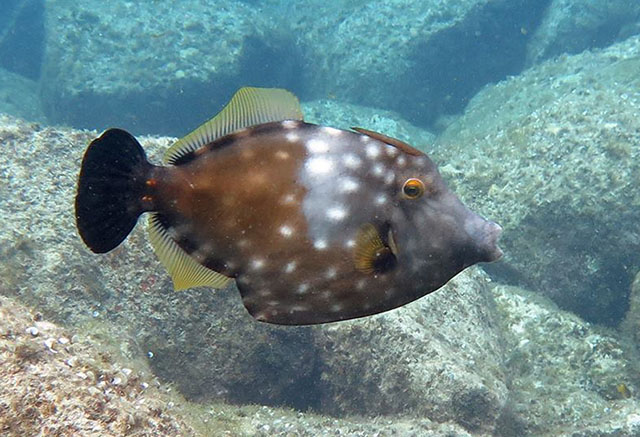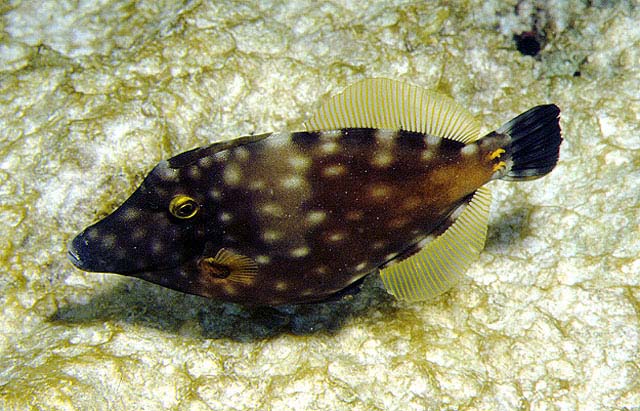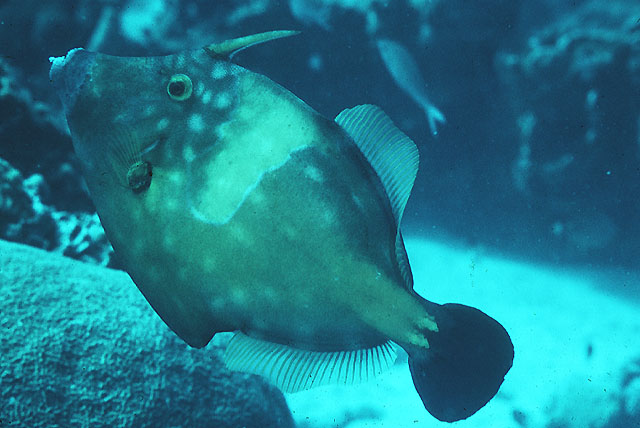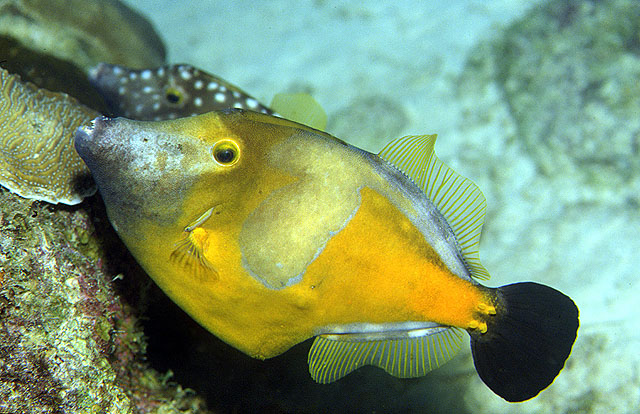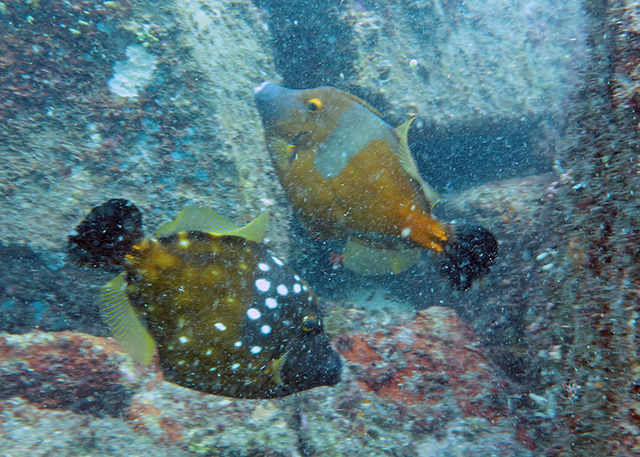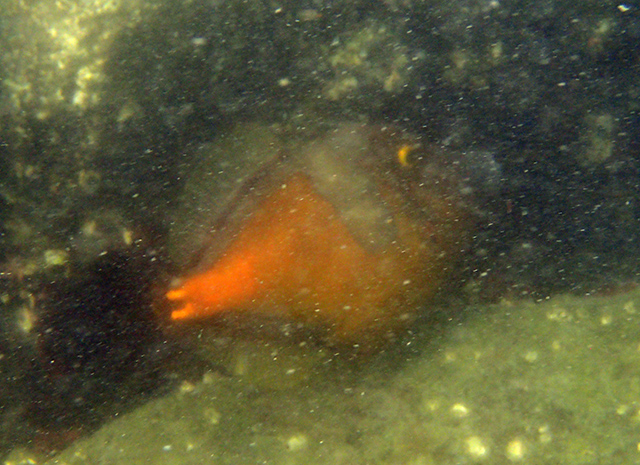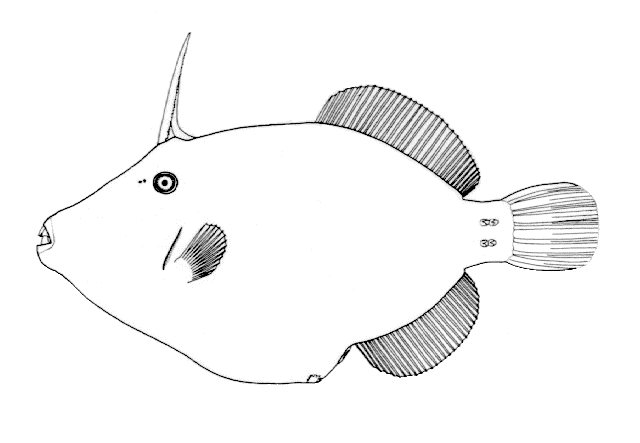Cantherhines
macrocerus
(Hollard,
1853)
American whitespotted filefish
View all media / Upload your photos and videos
Expand all
Classification / Names
Teleostei (teleosts) > Tetraodontiformes (Puffers and filefishes) >
Monacanthidae (Filefishes)
Etymology: Cantherhines: Greek, kanthos = the outer or inner corner of the eye, where the lids meet, 1646 + Greek, rhinos = nose (Ref. 45335).
Environment / milieu / depth range / climate zone / distribution range
Distribution
Western Atlantic: Florida, USA and Bermuda to São Paulo, Brazil. Eastern Atlantic: St. Paul's Rocks (Ref. 13121).
Maps

Cantherhines macrocerus / Native range
AquaMaps Data sources:
GBIF
OBIS
This map was computer-generated and has not yet been reviewed.

Cantherhines macrocerus / Suitable habitat
AquaMaps Data sources:
GBIF
OBIS
This map was computer-generated and has not yet been reviewed.

Cantherhines macrocerus / Point map
AquaMaps Data sources:
GBIF
OBIS
This map was computer-generated and has not yet been reviewed.

Cantherhines macrocerus / Year 2050
AquaMaps Data sources:
GBIF
OBIS
This map was computer-generated and has not yet been reviewed.
Size / Weight / Age
Max length: 46.0 cm TL male/unsexed (Ref. 7251).
Short description
Dorsal spines (total): 2; Dorsal soft rays (total): 34 - 36; Anal spines: 0; Anal soft rays: 29 - 32. Adults are brown, with or without many prominent white spots on body and head; caudal fin black with obscure curved median white bar and two indistinct white basal spots (Ref. 13442). Males are readily distinguished from females of about same size by the larger spines on caudal peduncle and by orange color of patch of setae anterior to the peduncular spines on males (Ref. 13442).
Biology
Main reference
Robins, C.R. and G.C. Ray 1986 A field guide to Atlantic coast fishes of North America. Houghton Mifflin Company, Boston, U.S.A. 354 p. (Ref. 7251)
IUCN Red List Status (Ref. 125652)
Least Concern (LC); date assessed: September 10 2014
CITES (Ref. 131153)
Not Evaluated
CMS (Ref. 116361)
Not Evaluated
Threat to humans
Harmless
More information
- Countries
- FAO areas
- Ecosystems
- Occurrences
- Introductions
- Stocks
- Ecology
- Diet
- Food items
- Food consumption
- Ration
- Common names
- Synonyms
- Metabolism
- Predators
- Ecotoxicology
- Reproduction
- Maturity
- Spawning
- Spawning aggregation
- Fecundity
- Eggs
- Egg development
- Age/Size
- Growth
- Length-weight
- Length-length
- Length-frequencies
- Morphometrics
- Morphology
- Larvae
- Larval dynamics
- Recruitment
- Abundance
- References
- Aquaculture
- Aquaculture profile
- Strains
- Genetics
- Allele frequencies
- Heritability
- Diseases
- Processing
- Mass conversion
- Vision
- Pictures
- Stamps, Coins Misc.
- Sounds
- Ciguatera
- Speed
- Swim. type
- Gill area
- Otoliths
- Brains
Estimates based on models
Preferred temperature (Ref. 123201): 24.9 - 28, mean 27.1 °C (based on 268 cells).
Phylogenetic diversity index (Ref. 82804): PD50 = 0.5002 [Uniqueness, from 0.5 = low to 2.0 = high].
Bayesian length-weight: a=0.02089 (0.01283 - 0.03402), b=2.94 (2.80 - 3.08), in cm total length, based on LWR estimates for this species & (Sub)family-body (Ref. 93245).
Trophic level (Ref. 69278): 3.1 ±0.1 se; Based on diet studies.
Resilience (Ref. 120179): Medium, minimum population doubling time 1.4 - 4.4 years (Preliminary K or Fecundity.).
Fishing vulnerability (Ref. 59153): Moderate vulnerability (36 of 100).
Price category (Ref. 80766): High; Questionable: based on ex-vessel price for species in this genus.
Nutrients (Ref. 124155): Calcium = 22.3 [6.6, 67.0] mg/100g; Iron = 0.715 [0.250, 1.955] mg/100g; Protein = 18.2 [16.0, 20.3] %; Omega3 = 0.0721 [, ] g/100g; Selenium = 47.6 [18.4, 133.5] μg/100g; VitaminA = 49.5 [13.6, 175.9] μg/100g; Zinc = 1.55 [0.70, 2.75] mg/100g (wet weight);

